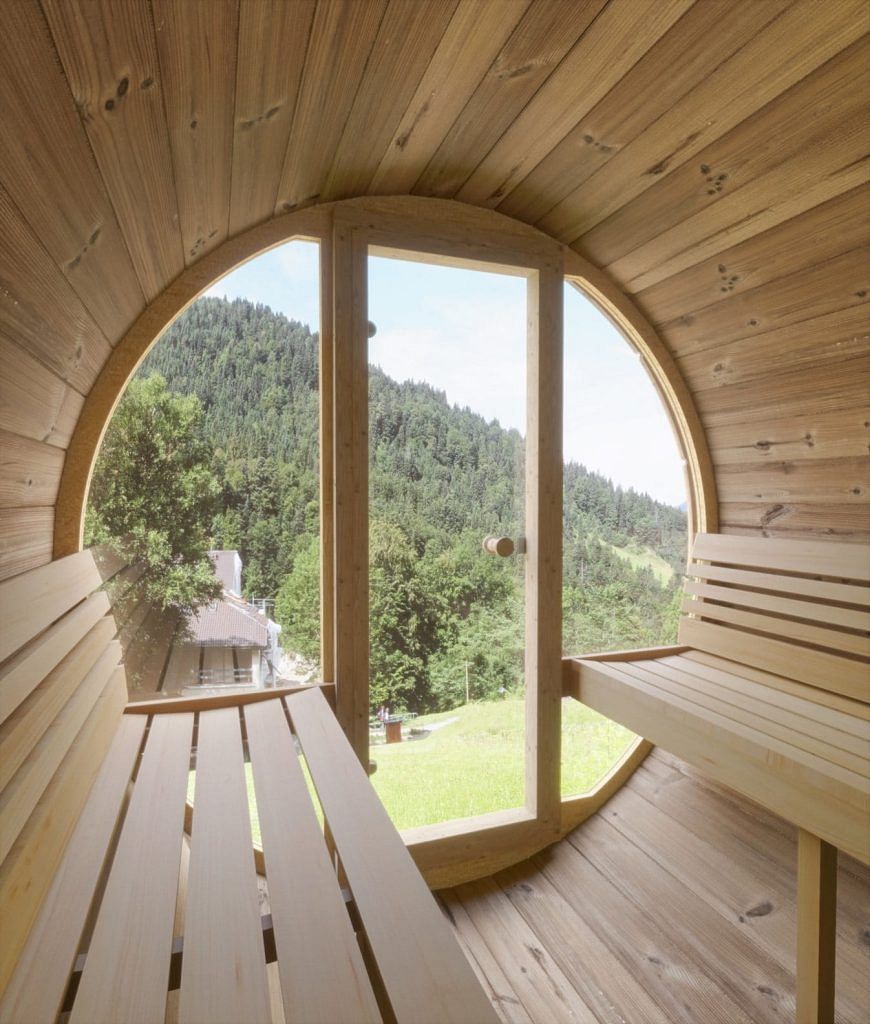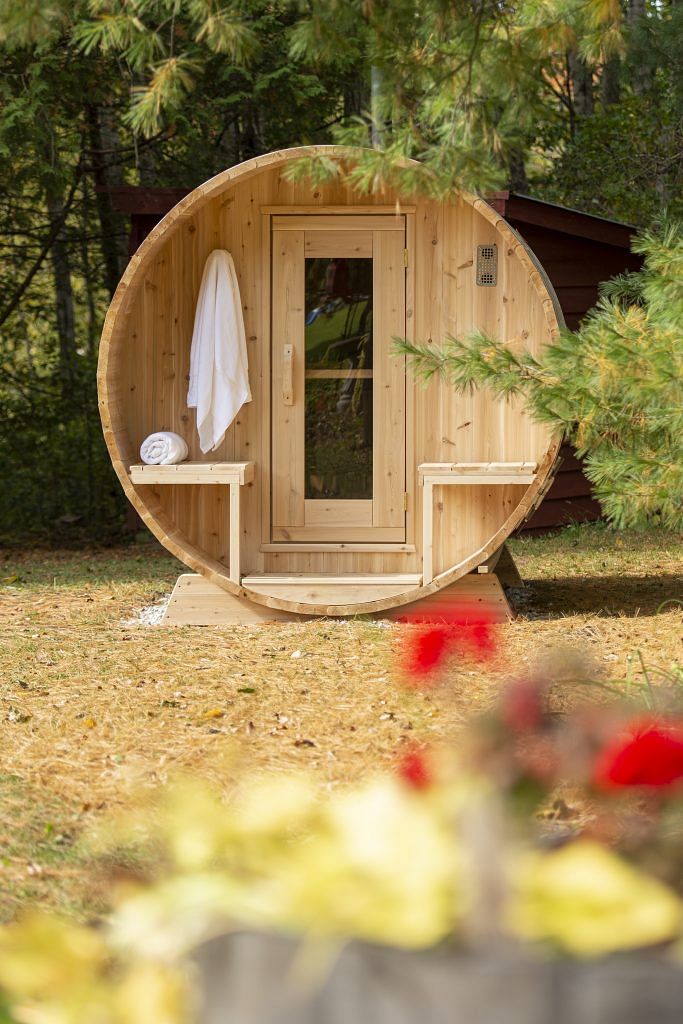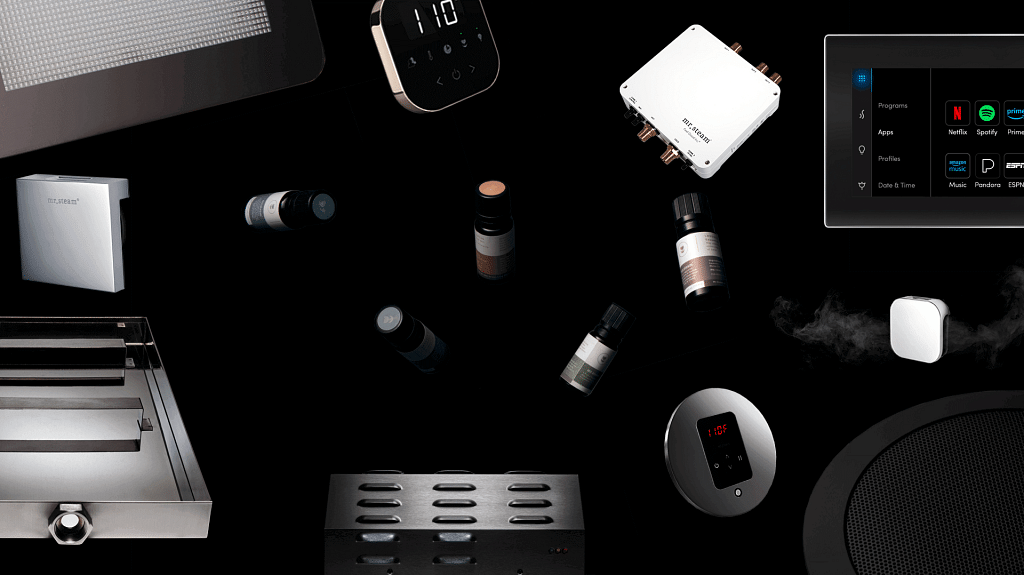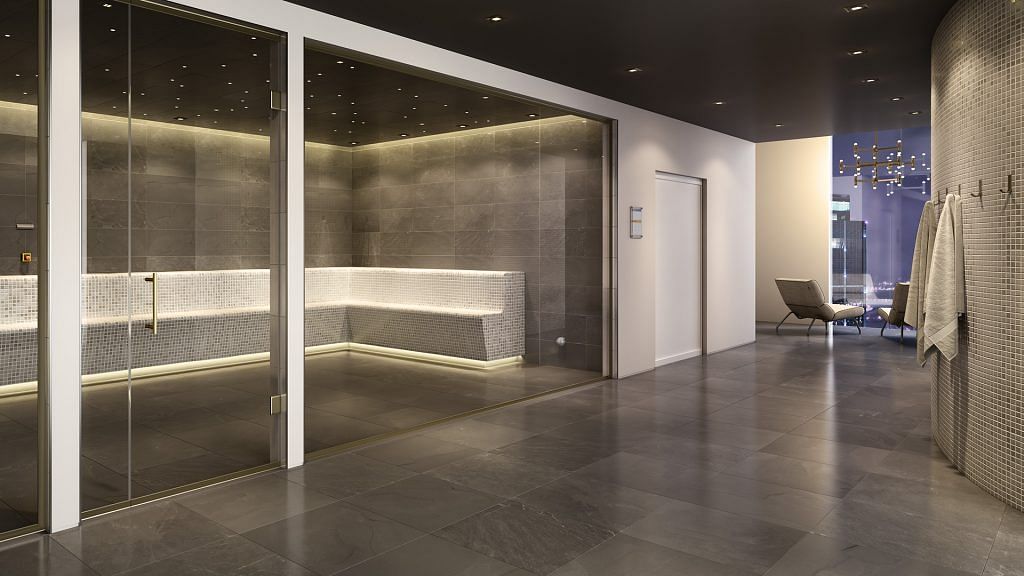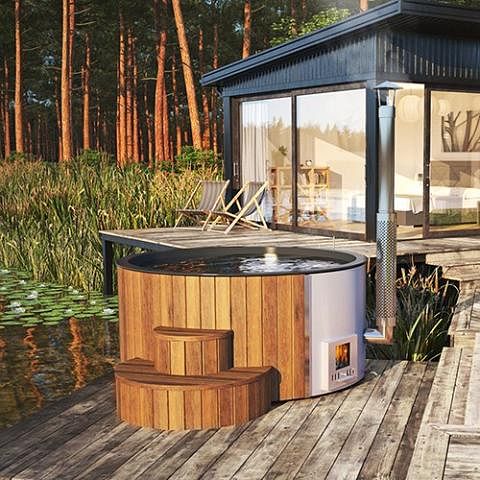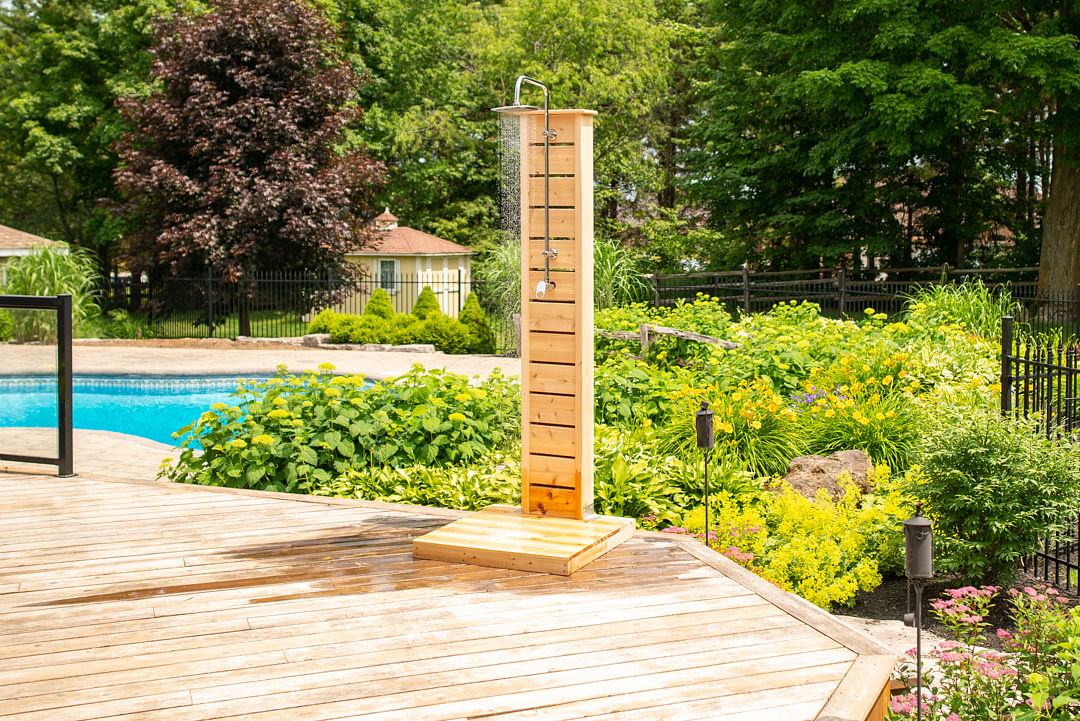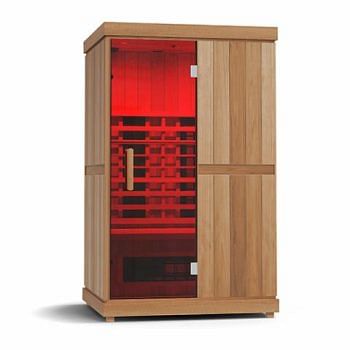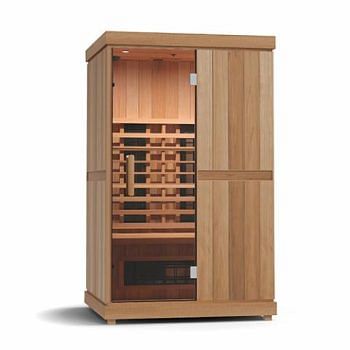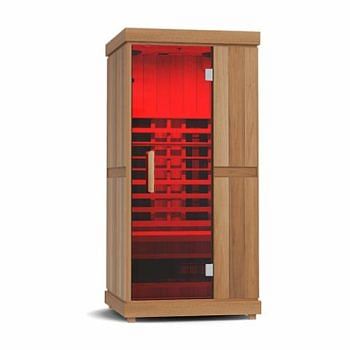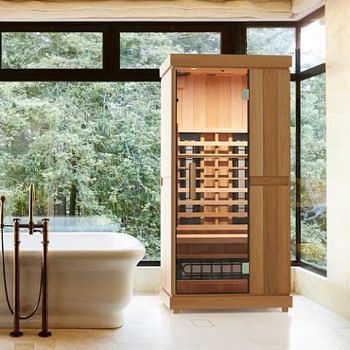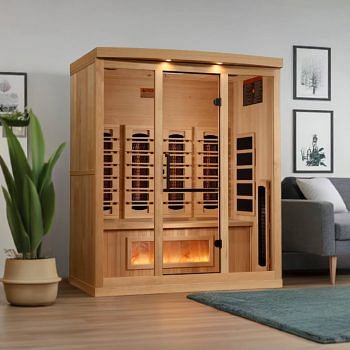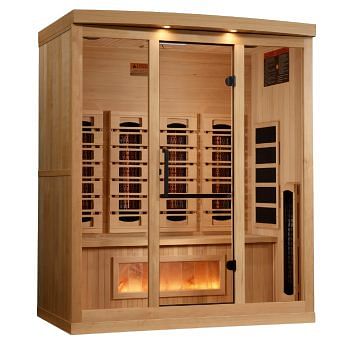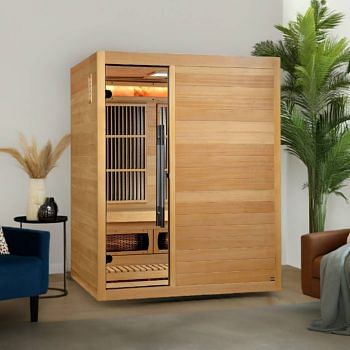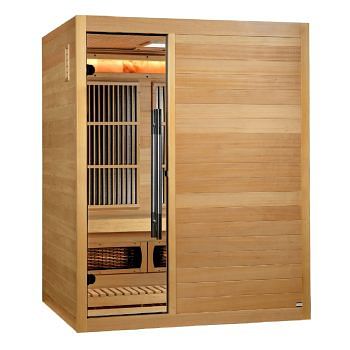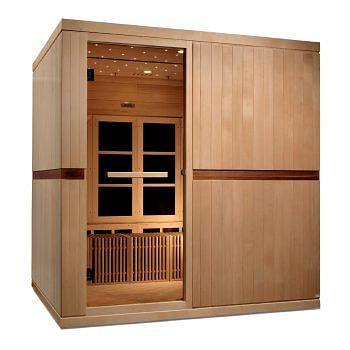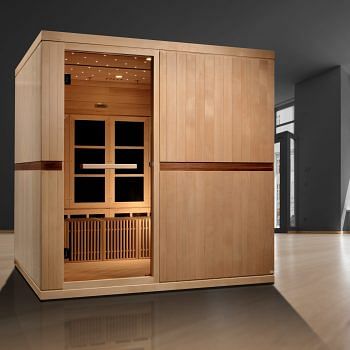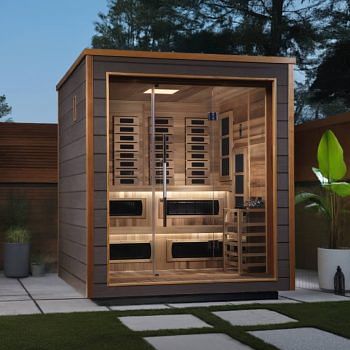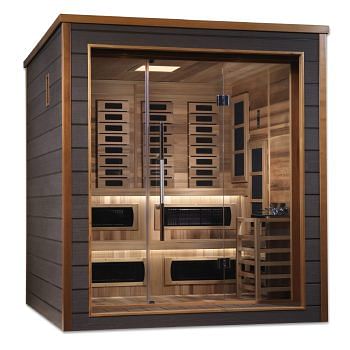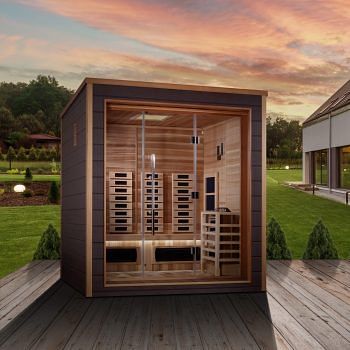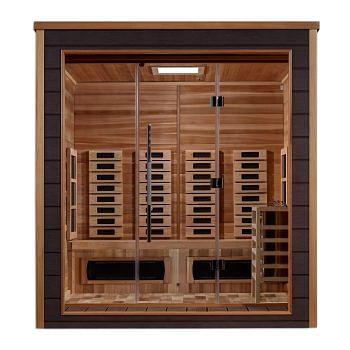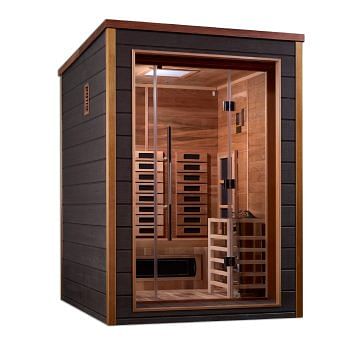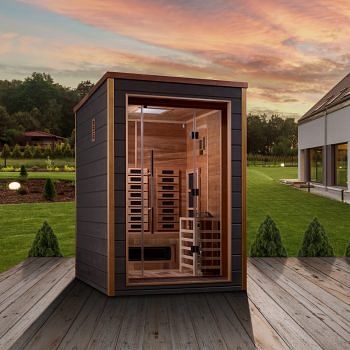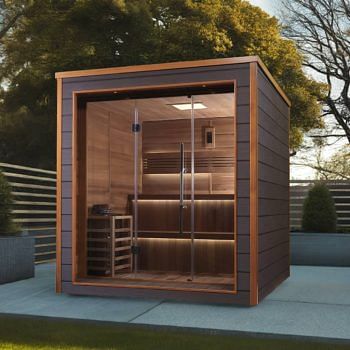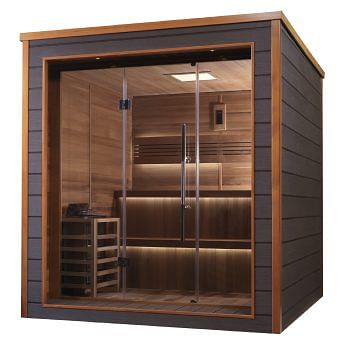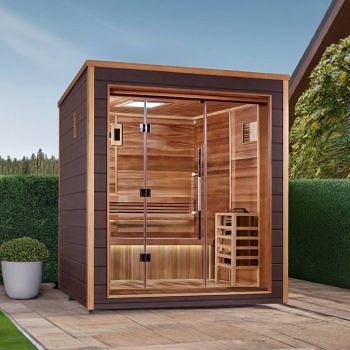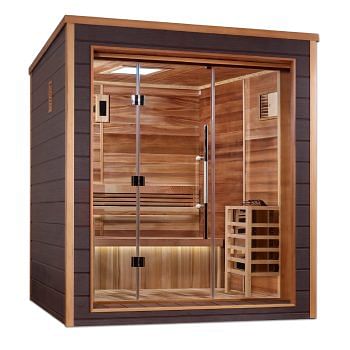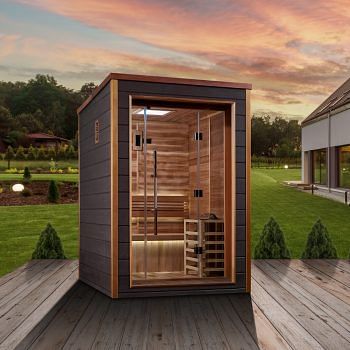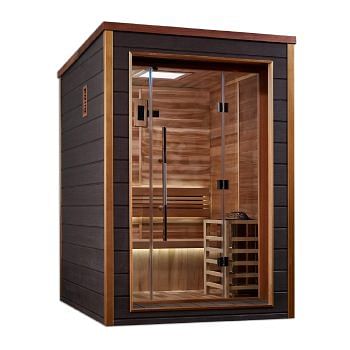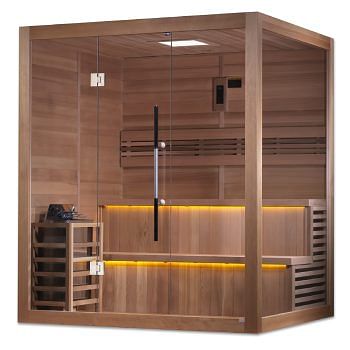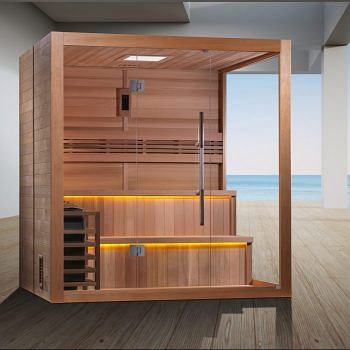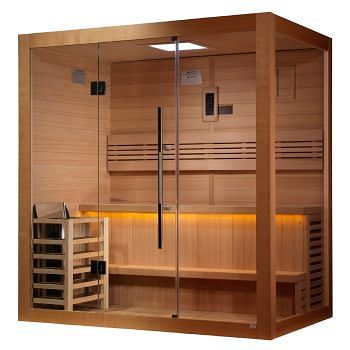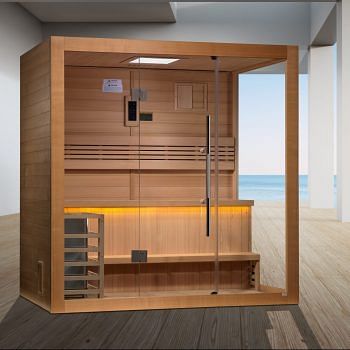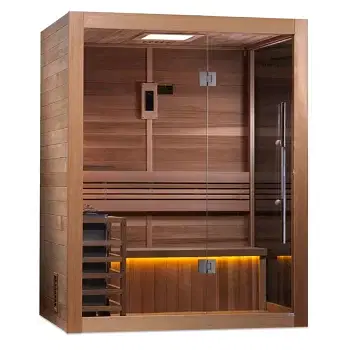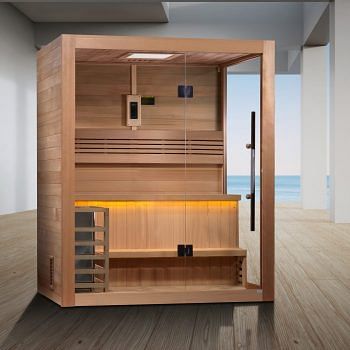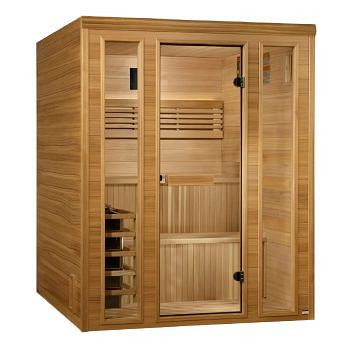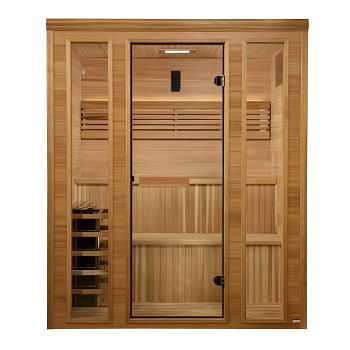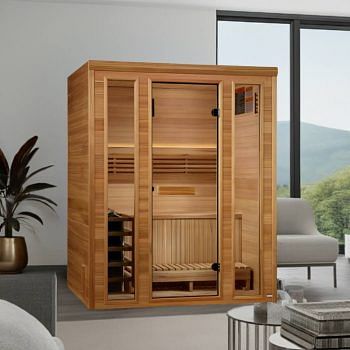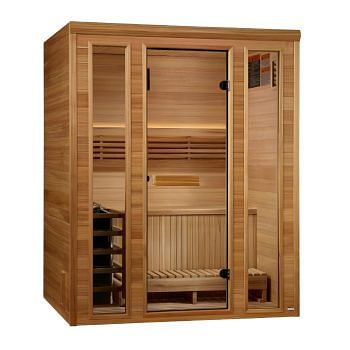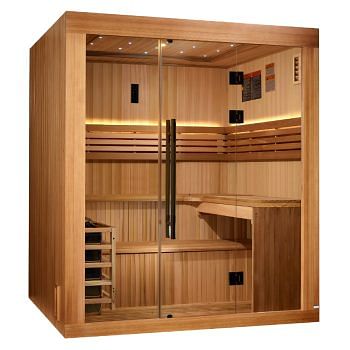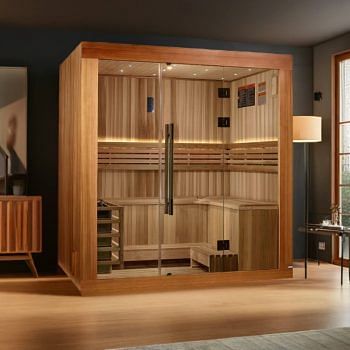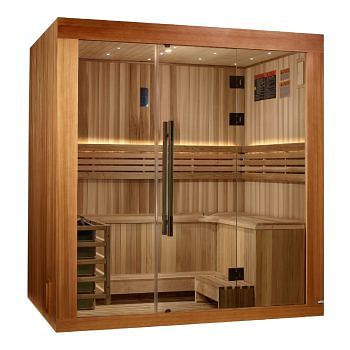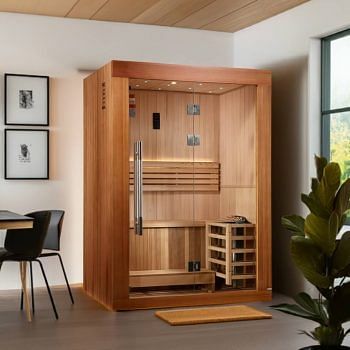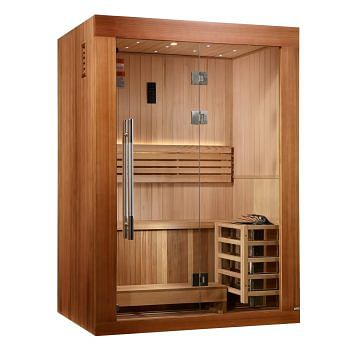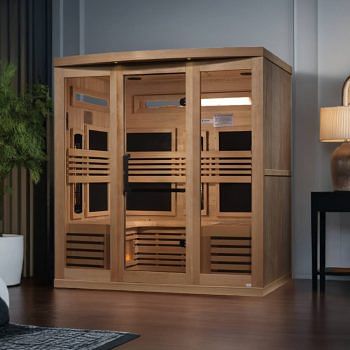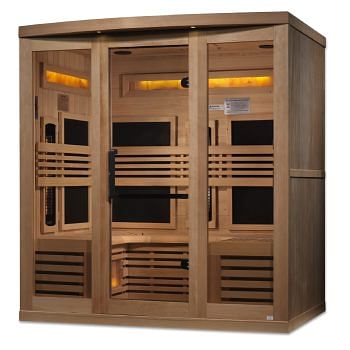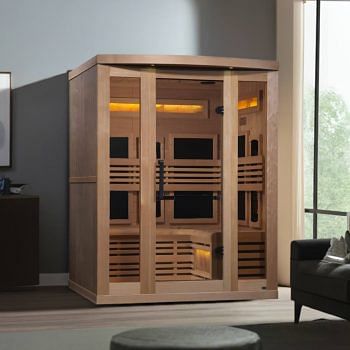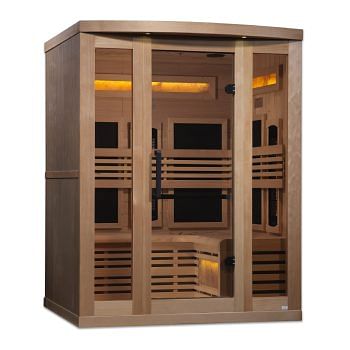Sauna Accessories

Dreaming of a luxurious at-home spa experience? Look no further! This guide will help you navigate the exciting world of indoor saunas and empower you to choose the perfect one for your needs and desires. Let's transform your home into a haven of relaxation and rejuvenation.
What Size Indoor Saunas Should You Get?
Choosing the right size indoor sauna is key to maximizing your at-home spa experience. Here are some important factors to consider:
- Number of Users: This is a primary consideration. Saunas typically come in sizes suitable for 1-6 people. Think about how many people will be using the sauna regularly. Do you plan on using it solo, with a partner, or with family? If occasional guest use is a possibility, factor that in as well. Opting for a slightly larger sauna than your typical needs can provide extra comfort and prevent feeling cramped during gatherings.
- Comfort and Layout: Consider how you'll use the sauna. If you prefer to lie down for maximum relaxation, ensure the sauna is long enough to comfortably accommodate you. Bench configurations also play a role. Some saunas have single-tier benches, while others offer double-tiers for various sitting or lying positions.
- Available Space: Measure the designated area for your indoor sauna meticulously. Account for door clearance, ventilation requirements, and a comfortable buffer zone around the sauna for safe and easy movement. Remember, a few extra inches can make a big difference in maneuverability, especially in smaller spaces.
- Sauna Type: Traditional saunas tend to be slightly larger than infrared saunas. Traditional saunas require more air circulation, so they may have a bigger footprint to accommodate the heater and proper airflow.
Additional Considerations
- Body Size: If you or someone who will be using the sauna regularly is tall, factor in extra height to avoid feeling restricted.
- Budget: Generally, larger saunas come with a higher price tag. Determine your budget beforehand and choose a size that strikes a balance between your needs and affordability.
By carefully considering these factors, you can ensure you select the perfect indoor sauna size for ultimate relaxation and enjoyment in your home spa.
What Material Makes the Best Indoor Saunas?
The material you choose for your indoor sauna plays a significant role in both aesthetics and functionality. Here's a breakdown of popular options to help you decide:
- Western Red Cedar: A classic choice known for its beautiful reddish hue, warm aroma, and natural resistance to moisture and warping. Cedar is a good all-rounder for both dry and steam saunas.
- Hemlock: A lighter-colored wood prized for its smooth feel, excellent insulating properties, and affordability. Hemlock is a great choice for those seeking a cost-effective option for dry saunas.
- Spruce: This light-colored wood offers good insulation and a pleasant aroma. Spruce is another budget-friendly option, particularly suitable for dry saunas.
- Abachi Wood: This pale wood with low heat conductivity is prized for its luxurious feel and minimal heat absorption. Abachi is an excellent choice for saunas where comfort is a top priority.
- Other Hardwoods: Options like Aspen and Alder are gaining popularity for their attractive light colors and heat resistance. These woods are suitable for dry saunas.
Making Your Choice:
- Durability: Cedar and some hardwoods offer superior long-term durability compared to softer woods like Spruce.
- Heat Resistance: Woods like Abachi excel in minimal heat absorption, making for a more comfortable sauna experience.
- Aesthetics: Cedar's reddish hue and Abachi's pale elegance are popular choices, while Hemlock and Spruce offer a more neutral aesthetic.
- Sauna Type: Cedar is a good choice for both dry and steam saunas, while some hardwoods may be better suited for dry heat only.
- Budget: Hemlock and Spruce are the most affordable options, while Cedar and Abachi come at a slightly higher price point.
Ultimately, the best material for your indoor sauna depends on your priorities and budget. Consider the factors above to make an informed decision that complements your vision for your home spa retreat.
Traditional vs Infrared Indoor Saunas
When it comes to indoor saunas, two main heating technologies dominate the market: traditional saunas and infrared saunas. Each offers distinct advantages, so understanding the key differences can help you pick the perfect one for your needs. Here are 3 main considerations:
-
Heat Preference:
-
- Traditional Saunas: These saunas use electric heaters to warm the air, creating a dry heat experience similar to a hot desert. The air temperature can reach up to 195°F (90°C), but the gradual heat penetration allows most users to tolerate it well.
- Infrared Saunas: These saunas utilize infrared light panels to directly heat your body at a lower air temperature (typically 110-140°F (43-60°C)). This creates a more gentle and radiant heat that penetrates deeper into muscle tissues.
If you want to read more about the best sauna temperature click the link.
-
Health Benefits:
- Traditional Saunas: While offering a classic sauna experience, traditional saunas may take longer to feel the full effects due to gradual air warming. However, the higher temperatures can promote deeper sweating, potentially aiding in detoxification.
- Infrared Saunas: Claimed benefits of infrared saunas include improved circulation, pain relief, and even weight loss due to increased calorie burning during use. The deeper heat penetration may also offer more targeted muscle relaxation.
-
Speed and Convenience:
- Traditional Saunas: Traditional saunas typically require 30-60 minutes to preheat the air to the desired temperature.
- Infrared Saunas: Infrared saunas heat up much faster, often in 15-20 minutes, allowing you to start your sauna session quicker.
Making Your Choice
Consider your preferred heat experience, desired health benefits, and how much time you're willing to invest in preheating. Traditional saunas offer a classic experience and potentially deeper sweating, while infrared saunas provide a quicker heat-up, more targeted muscle therapy, and potentially deeper heat penetration.
Type of Heater
The heater plays a crucial role in your indoor sauna experience. Here's a breakdown of the most common heater types to help you decide which best suits your needs:
- Traditional Electric Heaters
-
- Pros: Widely available, affordable option, efficient at heating large saunas.
- Cons: Slower heat-up time (30-60 minutes) compared to infrared. Requires sauna stones for heat distribution, which need occasional replacement.
- Far-Infrared Heaters
-
- Pros: Heats the body directly, providing a more comfortable and gentle heat experience at lower air temperatures. Faster preheat times (15-20 minutes).
- Pros: Heats the body directly, providing a more comfortable and gentle heat experience at lower air temperatures. Faster preheat times (15-20 minutes).
-
- Cons: Generally higher cost compared to traditional heaters. May not be as effective for large saunas.
- Combination Heaters
-
- Pros: Combines traditional dry heat with infrared emitters, offering a versatile experience.
- Cons: Most expensive option. May require more complex controls.
- Pros: Combines traditional dry heat with infrared emitters, offering a versatile experience.
Additional Considerations
- Sauna Size: Traditional heaters are generally more efficient for larger saunas, while infrared heaters may be sufficient for smaller spaces.
- Energy Efficiency: Both electric and infrared heaters are relatively energy-efficient. However, infrared heaters may offer a slight edge due to faster heat-up times and lower overall operating temperatures.
- Control Features: Some heaters offer advanced controls for setting temperatures, timers, and lighting. Consider the level of control you desire.
Making Your Choice
By weighing the pros and cons of each heater type, your sauna size, and desired features, you can select the most suitable heater for your indoor sauna. If budget is a top priority, a traditional electric heater is a solid choice. If you value a quicker heat-up and a more gentle heat experience, far-infrared might be the way to go. For ultimate versatility, a combination heater
Dry or Steam Indoor Sauna?
Choosing between a dry or steam sauna for your home can feel like a hot (or steamy) debate! Both offer unique relaxation and potential health benefits, but they cater to different preferences. Here's a breakdown to help you decide which indoor sauna is right for you:
Heat and Sweat Experience:
- Dry Sauna: Imagine a hot, dry desert. Dry saunas use electric heaters to create temperatures up to 195°F (90°C) with low humidity. This allows for easier breathing and higher heat tolerance, promoting deep sweating for potential detoxification and relaxation.
- Steam Sauna: Think of a luxurious steam room. Steam saunas use a generator to create a moist environment with temperatures typically ranging from 100-120°F (38-49°C) and high humidity. While the air temperature is lower, the moist heat can feel more intense, encouraging sweating and offering respiratory benefits.
Relaxation and Comfort
- Dry Sauna: Many find the dry heat of a traditional sauna to be very relaxing. The lower humidity allows for easier breathing and a more tolerable heat experience for longer sessions.
- Steam Sauna: The moist heat of a steam sauna can feel more luxurious and spa-like. Some users find the steam helps them unwind and promotes deeper relaxation.
Health and Wellness Needs
- Dry Sauna: The dry heat can improve circulation, ease muscle tension, and promote deep sweating for potential detoxification.
- Steam Sauna: The moist heat is particularly beneficial for those with respiratory issues, helping to clear congestion and soothe coughs. Steam can also improve skin hydration and soften pores.
Making Your Choice for Your Indoor Oasis
- Heat Preference: Do you enjoy a dry, intense heat, or do you prefer a gentler, more moist environment?
- Respiratory Needs: If you have respiratory issues like congestion, a steam sauna might be a better choice.
- Skin Benefits: For those seeking improved skin hydration, a steam sauna could be ideal.
- Overall Experience: Consider if you prioritize a deeper sweat session for relaxation or a more spa-like experience with respiratory benefits.
Remember: There's no right or wrong answer! Both dry and steam saunas offer incredible benefits. By understanding the key differences and aligning them with your preferences, you can choose the perfect indoor sauna to create your own personalized wellness haven.

